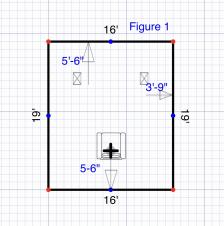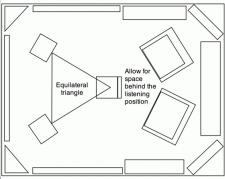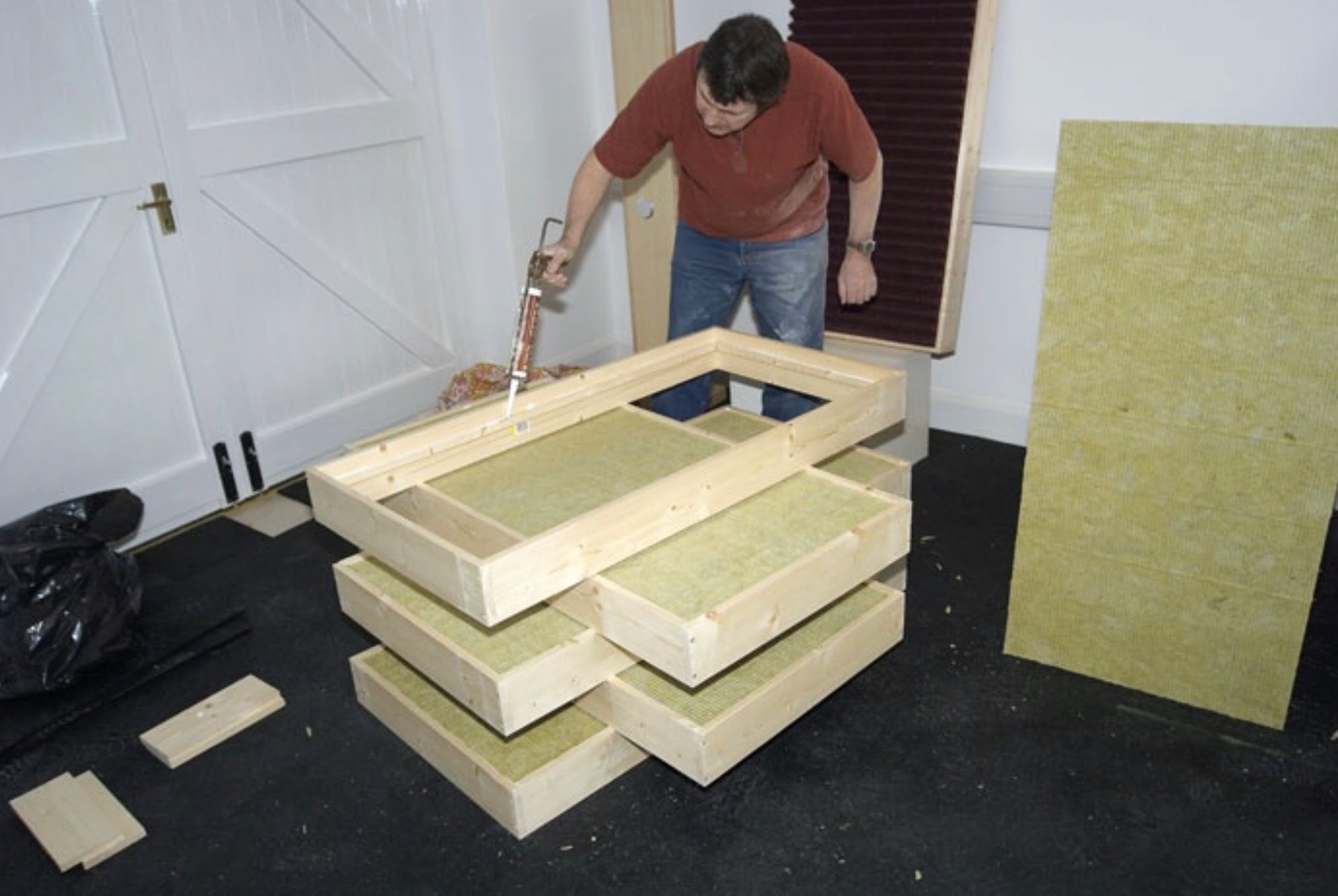It’s the time of year for saving money!
This is the first of several articles that will focus on basic DIY acoustics. We will cover ways budget-conscious audiophiles can make their systems sound great without spending any money. We will also look at more advanced acoustic upgrades. The first two installments will describe simple and easy things you can do without purchasing any additional equipment.
 We must start by choosing the best space in your house for your system. Of course, there are times when the choice will be made for you. But if you have more than one room from which to choose, look at the dimensions of each room. Choose a rectangular shaped room that is longer than it is wide. If at all possible, choose a room with dimensions that are not multiples of each other. For example, a room with an 8′ high ceiling that 16′ wide and 24′ long would problematic. A room that is 8′ x 13′ x 19′ would be much better. This “better dimension” will help reduce the resonance problems found in the bass range caused by room interactions.
We must start by choosing the best space in your house for your system. Of course, there are times when the choice will be made for you. But if you have more than one room from which to choose, look at the dimensions of each room. Choose a rectangular shaped room that is longer than it is wide. If at all possible, choose a room with dimensions that are not multiples of each other. For example, a room with an 8′ high ceiling that 16′ wide and 24′ long would problematic. A room that is 8′ x 13′ x 19′ would be much better. This “better dimension” will help reduce the resonance problems found in the bass range caused by room interactions.
Once you have chosen your best dimensional option, the next step is placement of the loudspeakers. Reflections in a room are detrimental to the intended frequency response of your speakers and their optimal stereo imaging.
It’s always a good policy to keep speakers away from corners (except if they have been designed to be placed in corners), as this is where the bass builds up the most. You can easily test how corners excite resonance. Stand in a corner and talk, then move slowly away. You will hear your voice is “boomy” and resonates in the corner, but evens out around 30″ to 36″away from the corner.
 Ideal speaker placement can be easily calculated in any standard “shoebox” shaped room. Simply multiply the width of the room by .29. For instance, if your room is 13′ wide, multiply 13 x .29. The answer is 3.77, or about 3’9″. That means you want to place the speakers 3’9″ from each side wall. Then take the length of the room and do the same. So, if the room is 19′ from front to back the desired distance from the front wall is 5’6″. Keep in mind, you should measure the dimensions from the wall to the front center of the speaker.
Ideal speaker placement can be easily calculated in any standard “shoebox” shaped room. Simply multiply the width of the room by .29. For instance, if your room is 13′ wide, multiply 13 x .29. The answer is 3.77, or about 3’9″. That means you want to place the speakers 3’9″ from each side wall. Then take the length of the room and do the same. So, if the room is 19′ from front to back the desired distance from the front wall is 5’6″. Keep in mind, you should measure the dimensions from the wall to the front center of the speaker.
Once the speakers are placed, you can locate an optimal listening position. In a rectangular room set up as in the diagram, the listening position will be centered between the side walls. Ideally the distance from the rear wall to the head of the listener should be either 29% or 41% off the rear wall. Since the room here is small, 29% would be ideal. This speaker and listener placement will give you the best frequency response and stereo imaging. By eliminating resonance as much as possible, the bass will be more even with less humps and valleys in tonal balance.
There will be compromises in any set up. The main thing to consider in a non-dedicated listening room is how to get the best sound without destroying the decor and functionality of the room itself. Trying different placements and configurations isn’t always easy, so these mathematical calculations will help mitigate some of that difficulty for you.
 What if you don’t have a “shoebox” shaped room? Avoid positioning your speakers too close to a wall, and make the side-to-side reflections as symmetrical as possible. A system arranged on a diagonal with the listener facing a corner, as in the next diagram, is a good solution.
What if you don’t have a “shoebox” shaped room? Avoid positioning your speakers too close to a wall, and make the side-to-side reflections as symmetrical as possible. A system arranged on a diagonal with the listener facing a corner, as in the next diagram, is a good solution.
It is often said that the room itself is the largest, most important component of any system. Imagine this. Let’s say you have a 10″ woofer, a 3″ mid-range driver, and a small tweeter all in your speaker cabinet. Now think of an imaginary cone the diameter of each of those, that reaches from the speaker to your ear. So, a 10″ diameter cone that gets progressively smaller until it’s the size of the opening of your ear. If you are 10 feet away from your speakers, that cone has a cubic volume of roughly 2-3 cubic feet. The direct signal in your room is the combined volume of all six imaginary cones, or less than 10 cubic feet. The rest of the sound will be reflected off some surface. A small listening room will be around 2000 cubic feet. That means only .005% of the sound is direct, hence the room is largest component of your system. We’ll come back to this in future articles.
In installment two, we’ll get into common household products and decor that can help improve your room acoustics.
Christopher Klein has been designing and building high end acoustic treatments for listening rooms, studios, and home theatres since 1992. He has also been a professional musician since 1977.








